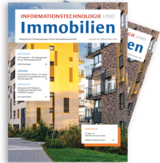Internationalisation as a driver of innovation – OpenPromos® Corporate Correspondence (OPCC) with new functions

The open solution library PROMOS.GT provides a range of different pre-configured industry solutions that were developed from previous customer projects. The translation of PROMOS.GT into English created the basis for international use. After all, with around 1.5 billion second-language speakers and 375 million native speakers2, English is not just the most widely-spoken language in the world but also the number one business language.
In this context, alongside PROMOS.GT, OPCC has also been adapted to meet the new challenges with multi-lingual capability. The OpenPromos® Corporate Correspondence solution integrates any version of Microsoft Word into the customer’s SAP® system for generating forms or standard letters, for example. This significantly simplifies the creation of correspondence, as the company’s employees can now create letters independently without any extensive programming skills with the aid of familiar MS Word tools. In view of the growing significance of corporate identity, generating standardised correspondence templates is becoming ever more important. This increases employee identification with the company and ensures a high recognition value for external third parties. Templates of this kind are created once using OPCC and can later be used again and again.


Innovation grows here
The continuous improvement of existing solutions and creation of new ones is one of the basic principles of the PROMOS way of working. Together with the customers, we are always working to continue developing the quality and product range in order to meet the current requirements. As well as the multi-lingual capability, numerous other new features have been developed in this manner.
Email as a basic means of communication
Previously, it was possible to open, print and archive letters that had been created. This meant that the majority of correspondence could be covered easily and conveniently using OPCC. However, as a significant percentage of communication with tenants and business partners takes place by email today, users can now also make use of the new e-mail function. No matter whether tenants want to have a document they have already received sent again by email or receive new information directly by electronic means instead of by post (e.g., approval for the tenant to lay laminate flooring), with OPCC it is now possible to generate a text e-mail or attach the relevant letter to an email as a PDF directly from within the SAP® system via SAPconnect. The subject and email text can be freely formulated using SAP® data.
Visually prepared ALV lists at the press of a button
In certain cases, customers want to send the information available in SAP® to external third parties, e.g. bank reporting, in a formatted manner. Although the data available in the form of ALV lists can be printed using the standard SAP® tools, the options for processing and formatting the data are frequently insufficient. With OPCC, customers can jump directly from the ALV list in question to Word, where they will find a visually formatted, printable version of their data.

Individualisation using “subsequent editing”
Much of the correspondence stored in OPCC is standard letters. These are valid throughout the company and users simply access and print them. Generally, such standard letters are not intended to be modified. However, as well as these, there are letters in which individual text modifications or corrections are specifically requested or required; for example, if a second signature is necessary or an error is discovered. The “subsequent editing” feature for OPCC was developed for such cases. With the new function, users can easily edit the letter in question and then print it. It is no longer necessary to generate the correspondence again. Once the correspondence is archived, it is removed from editing mode again. This allows users to individualise and save their correspondence in the easiest possible manner.
And there is even more...
As part of the improvement process, a host of other innovations have been developed in addition to those already discussed, for example:
- The authorisation check that is used to regulate users’ read and modification rights
- Provision of a new print server that enables printing and generation of PDF files, taking into account individual specifications
- And, not least, the continuous development of programs that supply OPCC (e.g., purchasing, ordering) must be included here, too.
PROMOS customers will also benefit from the continuous development of existing products in the future. Internal development impulses as well as new requirements and changing customer needs all drive the innovation process. The aim is always to simplify work processes as far as possible and, in this way, to save valuable time and personnel resources, allowing customers to concentrate on their core competences.
- Bundesinstitut für Bau- Stadt- und Raumforschung (Federal Institute for Research on Building, Urban Affairs and Spatial Development) (06.2013): Internationalisierung der Wohnungs- und Immobilienwirtschaft (The internationalisation of the housing and real estate business). http://www.bbsr.bund.de/BBSR/DE/Veroeffentlichungen/BerichteKompakt/013/DL_2_2013.pdf?__blob=publicationFile&v=2 (last accessed on 29 Jan. 2015)
- Statista GmbH (year not provided): The most spoken languages worldwide. https://www.statista.com/statistics/266808/the-most-spoken-languages-worldwide/ (last accessed on 29 Jan. 2015).
Author:

Florian Terkowski
Professional Consultant Real Estate Consulting
PROMOS consult


